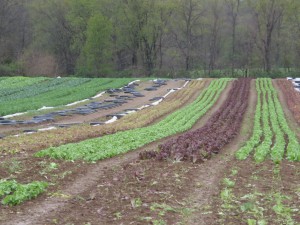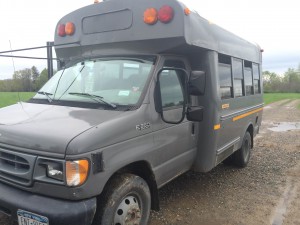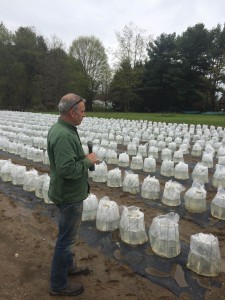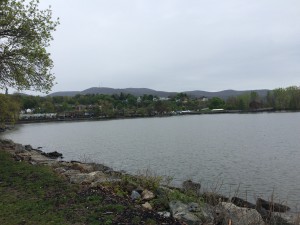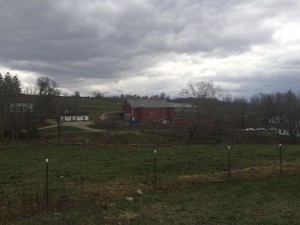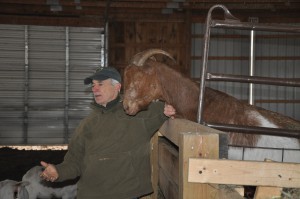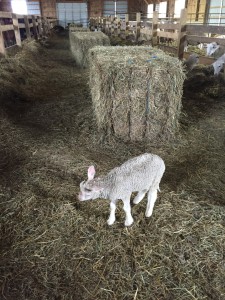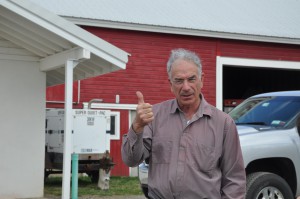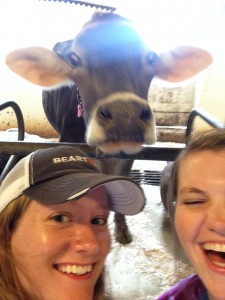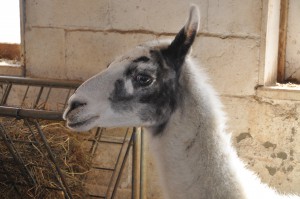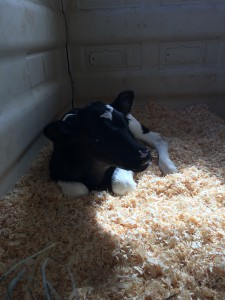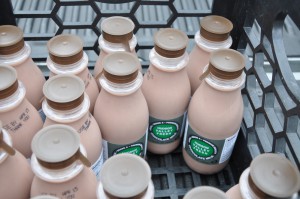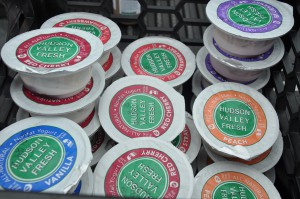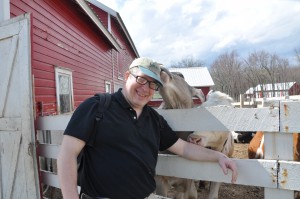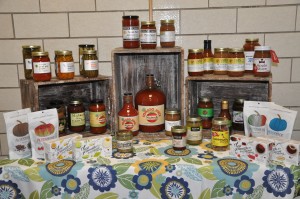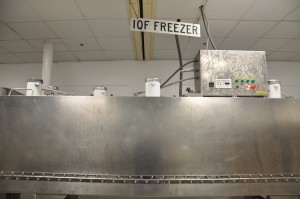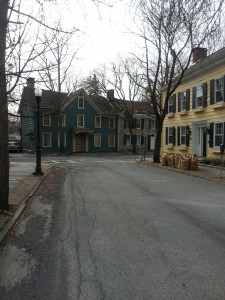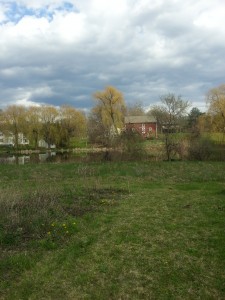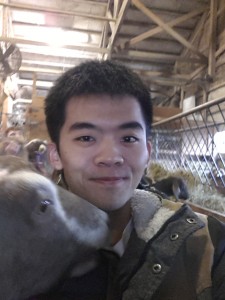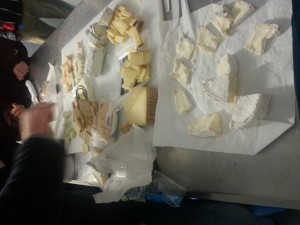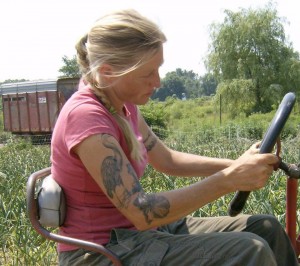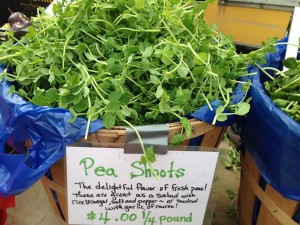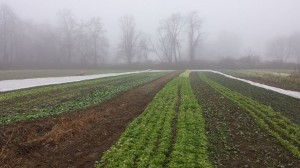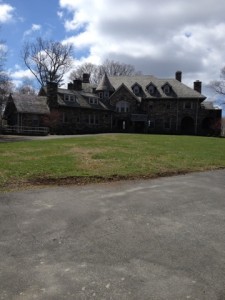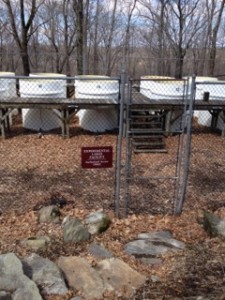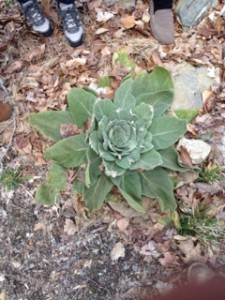This past Friday we visited our last agricultural site, Migliorelli Farm. Located in Red Hook, Migliorelli Farm was by far the largest farm our course visited. Although large for the Hudson Valley, Migliorelli Farm remains small in relation to typical farms in other regions of the U.S. Despite its size, Migliorelli Farm continues to maintain its family values, as evidenced by its CEO (and our lovely tour guide), Ken Migliorelli. Ken demonstrated his deep passion for agriculture as he drove us around the 500 acre farm that hosts 130 different varieties of fruits and vegetables.
Due to the farm’s expansive acreage, Ken drove our class in one of several buses as he explained the breakdown of his business. We saw everything from kale to apples to tomatoes. Despite the magnitude and diversity of crops, Ken displayed an unmatched expertise in innovative agricultural strategies. Although he’s in his 40th season, Ken continues to experiment with his techniques and learn from the newest methods. One such method is high-density Stone Fruit production. Drawing from his travels in Italy, Ken has begun a process of consolidating apple and pear orchards. In doing so, he is able to obtain more output without further strain on the land and less labor involvement.
Another strategy he showed us was for his tomato fields. Each tomato plant has a plastic water-filled bag covering it, acting as a shield to outside weather and maintaining a stable temperature for the plant to grow in. Pictured below is Ken explaining this new experimental farming technique:
While Migliorelli Farm has grown into an expansive business, Ken expressed his pride in the fact that his produce never travels farther than New York City. The farm distributes both locally and in New York City through 30 fresh markets every week. In addition to the markets, Migliorelli owns three separate farm stands in the Hudson Valley, each of which is open daily and is run by Ken’s wife and daughter. The remainder is sold as wholesale produce, but this represents the lowest percentage of total profits.
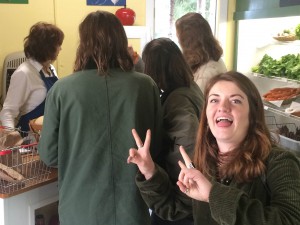 (Fun at a Migliorelli Farm Stand. PC: John)
(Fun at a Migliorelli Farm Stand. PC: John)
Now that he feels he has reached his production goals in growing fruits and vegetables, Ken explained to us that he is beginning to experiment with peripheral projects, including brewing beer, building an event space, and pick-your-own style harvesting. Rather than simply functioning as a typical farm, Ken plans to extract more value from his land and products. He wishes to mirror the techniques of smaller farms in the region; farms can generate revenue from means beyond their crops. A dilapidated barnhouse need not waste away. Such facilities can serve as an event space for private parties and weddings, which his daughter and wife plan to act as coordinators of.
Overall, our Migliorelli Farm experience was undoubtedly enjoyable and educational. Ken demonstrates a passion for maximizing output while keeping his produce both local and accessible to the Hudson Valley community. While Migliorelli Farm is large, the farm maintains its familial charm.
Visiting a farm can work up an appetite and “Holy Cow” were we hungry for ice cream! It’s a shame that this semester and Field Experiences in the Hudson Valley have come to an end. We loved #ENST291 #HudsonValley #localfood and #Nevarez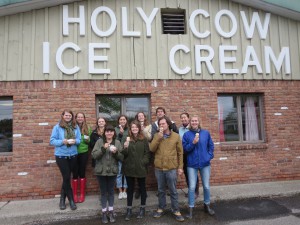
(PC: Baynard)
